Union Public Service Commission (USPC) is India's main regulating organisation, which conducts civil services, one of the most competitive and prestigious tests.
UPSC also holds several competitive tests to fill various government civil service positions. It is in charge of organising examinations for positions such as IAS, IPS, IRS, and IFS.
Indian civil service tests started after the Montagu Chelmsford reforms. On October 1, 1926, India's Public Service Commission was established.
Sir Ross Barker of the UK Home Civil Service was the inaugural Chairman. The "Federal Public Service Commission," which held examinations, was then renamed the "Union Public Service Commission" on January 26, 1950. (UPSC).
UPSC was founded to administer government job examinations. In cooperation with each State Government, the Central Government determines each year's Promotion Quota openings and makes the final appointments.
Do you know which are the best history books for UPSC in Hindi? If not, then read this article till the end to know all Best History Books for UPSC in Hindi.
Our Top Picks
List of 11 Best History Books for UPSC in Hindi (2022)- UPDATED
Examination Pattern of the UPSC examination
The Civil Services Examination (CSE) is divided into two parts: UPSC Prelims and UPSC Mains. The prelims examination consists of objective-type questions, whereas the final examination requires descriptive and essay-type responseTs.
UPSC Prelims: In paper I, every question is worth two marks each. Therefore, the total number of marks for the question paper is 200.
The Civil Service Aptitude Test assigns a value of 2.5 points to every question. Therefore, the total number of marks for the question paper is 200.
Additionally, 0.33 points will be deducted from the student's total score for each incorrect response, which means that 0.66 points will be subtracted from paper I and 0.83 points from paper II.
When a candidate provides more than one solution to a question, all of those answers will be disregarded, even if one of them is correct.
To participate in the main examination, candidates need to achieve a score of at least 33 percent on Paper II and pass the qualifying marks for Paper I.
UPSC Mains: The mains examination for the UPSC CSE is a paper-based test.
The Mains examination consists of a total of nine separate papers. The time limit for each examination is three hours, and blind students receive an additional half-hour.
The other papers are each worth 250 marks, except for papers A and B, which have a total of 300 marks.
The major examination consists of two parts: the qualifying portion and the section that determines whether or not you are evaluated for merit.
In addition, to move on to the interview stage, it is necessary to participate in all of the examinations. Here, questions are subjective.
Books for UPSC History Section
Prarambhik Bharat Ka Parichay
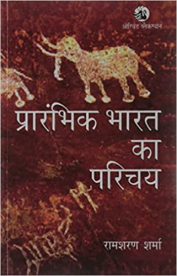
It reviews ancient Indian history from the prehistoricera to the seventh century. one of the most prudential ancient history book for upsc in hindi.
It discusses ancient India's governance, economy, society, religion, philosophy, science and technology, and the contributions of ancient India to these subjects.
Prachin Bharat (Ancient India), previously published by NCERT, is revised, updated, and upgraded in this book.
The book has been updated to meet the needs of university and college students.
Features
Video Review
Madhyakaleen Bharat – Rajniti, Samaj Aur Sanskriti
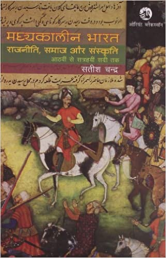
Madhyakaleen Bharat (in Hindi) is a book about Medieval India's history.
It spans the years from the seventh through the seventeenth centuries.
Most publications on medieval Indian history began around 1206, the year of the Turkish invasion and the establishment of Turkish control in areas of northern India.
The present book, Madhyakaleen Bharat, deviates from this trend by beginning considerably earlier, in the eighth century.
Features
Video Review
Bharat Ka Rashtria Aandolan

This book covers India’s independence movements and struggles, regardless of their size and influence.
Although the means and ideals of these campaigns differed, they all shared a common aim of independence.
This book includes oral and written narratives from all around the United States, making it historically rich and diverse.
The book chronicles the growth of India's freedom struggle in great detail, leaving no detail unexplored.
Features
Video Review
Adhunik Bharat Ka Itihas OR Spectrum
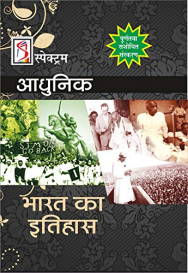
The current edition includes chapters on European arrival in India and the development of British control in India and supplementary information in other chapters.
There are also chapters regarding the challenges a newly independent nation faces after a devastating division.
The Nehruvian era is also briefly covered.
Features
Video Review
Bharatiya Kala, Sanskriti Evam Virasat: Civil Sewa Pariksha Hetu
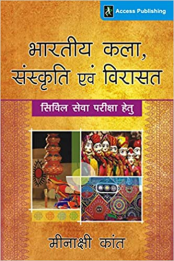
This book opens with a lengthy examination of different themes, such as India's history and culture.
It examines the origins of Indian culture before delving into its numerous aspects.
India is a varied country with a population that is more diverse than similar.
Keeping the constant subject of diversification in mind, applicants should learn about all of India's regional cultures.
Features
Bharat: Gandhi Ke Baad
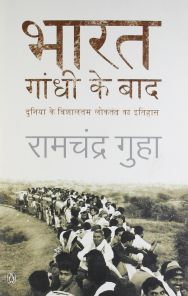
The book is the Hindi translation of India After Gandhi.
This book chronicles the significant events and developments after India gained independence from British rule in 1947.
Most history textbooks on India describe events from prehistoric times until the country earned freedom from foreign dominion.
However, this one brings the reader into the hidden truth of modern times.
This was the era when the foundations of Indian democracy were laid, and the fledgling nation was subjected to several cruel attacks based on religion, caste, class, and language.
Features
Video Review
Samkaleen Vishwa Ka Itihas 1890 – 2008
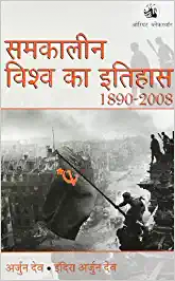
From the beginning of the last decade of the nineteenth century until the beginning of the First Globe War in 1914, Europe was the dominant power in the world.
However, the beginning of European dominance's decline was already starting to show itself.
These two countries had evolved to become major powers, particularly outside of Europe, Japan, and the United States.
Features
Video Review
Bhartiya Itihas Ke Kuch Vishay Bhag-I (Class 12)
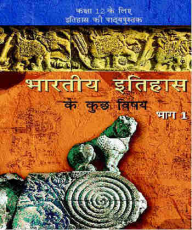
Colonialism, archives, The Revolt of 1857 and its Representations, and colonial cities are covered in the book's several chapters, one of the most prudential history ncert books for upsc in hindi.
In addition to the literature regarding the Civil Disobedience Movement, it also includes material concerning Mahatma Gandhi and the Nationalist Movement that he was the founder of.
The textbook provides a comprehensive discussion of various topics, including the India-Pakistan partition.
Features
Video Review
Bhartiya Itihas Ke Kuch Vishay Bhag-II (Class 12) -
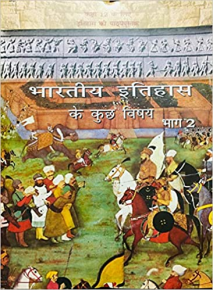
NCERT's Bhartiya Itihas Ke Kuchh Vishay (part 2) is a History (Itihas) textbook for class 12.
It was created by the CBSE Board course of study and is thus used in schools to prepare students for the CBSE Board examination.
This book is for students in class XII who are studying in Hindi medium and have humanities/arts as a stream.
It is suggested that you purchase all of the parts of this series. This is the second part of the textbook.
Features
Video Review
Bhartiya Itihas Ke Kuch Vishay Bhag-III (Class 12) -
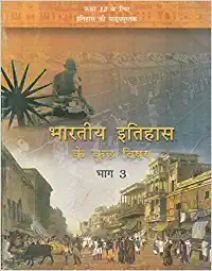
This book opens with a lengthy examination of different themes, such as India's history and culture.
It examines the origins of Indian culture before delving into its numerous aspects.
India is a varied country with a population that is more diverse than similar.
Keeping the constant subject of diversification in mind, applicants should learn about all of India's regional cultures.
Features
Video Review
Vishwa Itihas Ke Kuch Vishay (Class 11)
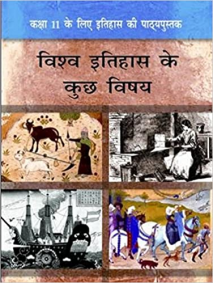
'Vishwa Itihas Ke Kuch Vishay' is a Hindi-medium history textbook for Class XI students chosen from the Humanities/Arts stream.
It is required in schools because CBSE Boards' rules issue it.
All of the books are entirely original and follow the NCERT 2021 syllabus.
It's recommended as the best world history book for upsc in hindi.
Features
Video Review
Preparation Strategy for the UPSC History Section
Since a substantial portion of the subject overlaps between the Prelims and Mains, it is best to cover the UPSC history syllabus in its entirety.
The following technique for preparing a history subject can be helpful:
Reading NIOS/IGNOU notes can help you improve your understanding.
2: Take a look at the Previous Year's Questions - This will give you an idea of the questions that will be asked. It will also assist you in fine-tuning and increasing the effectiveness of your preparation method.
3: Go over the topics syllabi-by-syllabi - Maintain strict adherence to the syllabus, especially on this topic. When reading reference materials, make sure you just read the chapters of the UPSC CSE curriculum.
4: Mock examinations - Write as many mock tests as you can while covering as much of this subject as possible.
Tips related to Book Selection for Preparation
Reading one essential book is always necessary to have a clear and good understanding of the subject. The authentic notes on that subject can then be found in specialised books provided by coaching institutes or other book publishers.
It takes a significant amount of time and effort to locate the specified study material for reading purposes. It is important to remember that studying for the Civil Service examination necessitates 'purposeful reading.
' To anticipate potential questions requires reading with a laser-like focus on the presented topic. Bullet points for their likely response are being prepared at the same time.
Conclusion
The Union Public Service Commission (USPC) is India's primary regulating agency for civil services, a highly competitive and well-known examination.
UPSC also conducts tests to fill openings in the civil service. It organises examinations for the IAS, IPS, IRS, and IFS. To create a solid historical foundation, read NCERTs from Classes 8 to 12.
One can get an idea of the questions in the UPSC examination by looking at the questions from previous years. It aids in the fine-tuning and improvement of your preparation strategy. You can also conduct a data search to find answers. Syllabus-by-syllabus
To sum up, this was all about Indian history books in Hindi for UPSC. I hope the information was worth reading and all your queries got cleared with the relevant information provided in the article.
For any more queries regarding Indian history books in Hindi for civil services, you can reply to us with a question in the comment box. We would get back to you with an answer to your query.
Frequently asked questions (FAQs)
Q1 - What is the History syllabus for UPSC?
The history syllabus of the UPSC examination includes ancient, medieval, and modern Indian history.
Q2 - When is the Examination Notice issued?
The examination notice is usually issued in February/March every year.
Q3 - Is NCERT enough for the history syllabus for UPSC?
Yes, a thorough understanding of the historical events covered in NCERT textbooks is enough to clear the history section of UPSC.
Q4 - What is the best book to cover the history syllabus for UPSC?
No one best book can be used to cover the entire history syllabus for the examination. A collection of books mentioned in the article would help in covering the entire set of events that are relevant to the examination.
Here is the Best History Books for UPSC in Hindi:


